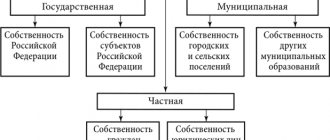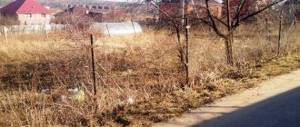Types of land ownership
Depending on the composition of the subjects, we can talk about distinguishing the following forms of land ownership:
- Private property. The implementation of this form occurs in the interests of an individual citizen or any groups or associations.
- State property. The implementation of this form of ownership is carried out in the interests of society as a whole by the power of the state.
- Municipal property. In other words, it is local property. It is implemented in the interests of residents of a particular locality by local executive bodies.
Rules for arranging a personal plot
The location of buildings on the local land is inextricably linked with its improvement. This is a set of measures aimed at improving the appearance of the site, as well as ensuring its more convenient operation. Thanks to these works, the yard becomes attractive and respectable.
Landscaping of the local area includes the following actions:
- clearing the land of debris, dry grass, and dumping of unnecessary materials;
- planning work to improve the facility;
- laying paths made of paving stones or natural stone;
- arrangement of flower beds and lawns, landscaping by other methods;
- construction of decorative fences and artificial reservoirs;
- installation of gazebos, playgrounds, benches, barbecues, decorative sculptures;
- arrangement of a drainage system, installation of lighting.
Important! Water supply to the artificial reservoir and to the house is carried out before the landscaping of the territory.
When laying paths and fences, any materials at the discretion of the owner are suitable. Most often, a wooden gazebo, a bench-shaped swing, a decorative fountain or a small artificial pond are installed.
A swimming pool with a relaxation area with sun loungers is suitable for a large area. The fence can also serve as a barrier to protect the recreation area from pets and unauthorized visits from unwanted guests. Small fences are used to zone space.
It is important that the landscape design is in harmony with the appearance of the residential building. All elements, in addition to decoration, must bear a functional load. You can order a landscape design project and the optimal layout of buildings on your personal plot by contacting specialized companies.
Objects and subjects of property rights
When examining the issue concerning land and ownership of it, let's talk about objects and subjects.
As for the object, in this case it is a piece of land that belongs to one or another entity. There are certain nuances here.
Under no circumstances can those lands that are excluded from circulation (national parks, various natural monuments, nature reserves), as well as lands whose circulation is limited (for example, forest lands) be recognized as objects of ownership rights.
Mandatory characteristics of an object of ownership include its cadastral valuation, size, location, and turnover.
Since in Russia, which is a federal state, there are two levels of government, state property (including land) can be divided into the property of local governments and authorities (municipal), as well as the property of state entities.
Let's start with the property of the constituent entities of the Russian Federation. Here we are talking about lands:
- defined in this group by federal regulations;
- transferred free of charge from state property;
- acquired on the grounds provided by law
- included here due to the delimitation of state property.
Now about municipal, local property. This includes lands:
- classified as local property by regulatory documents;
- ownership of which appeared during the delimitation of state property;
- acquired on the basis of the grounds set out in the Civil Code;
- transferred from state property free of charge.
We invite you to familiarize yourself with: Title documents for land plots of unlimited permanent use: regulatory requirements
Let's move on to the subjects. They are the owners of a particular land plot, recognized as such in accordance with the requirements of the law.
If we turn to Article 15 of the Land Code of Russia, we will see that this includes:
- Individuals (citizens of the Russian Federation, and in addition to them - foreign citizens and stateless persons (with certain restrictions);
- Organizations (foreign - with restrictions);
- Subjects of the federation;
- Municipal entities.
Any subject of land ownership must have legal capacity and capacity.
Legal capacity means the ability to have certain rights and obligations. And legal capacity is to manage these rights and responsibilities.
Dimensions of the plot and local area
Sn=S*Уpz,
where: Sn - house area;
Sr is the area of the house premises;
Уpz is a specific indicator of the share of a land plot. It is taken per 1 sq.m of housing. This indicator will depend on the number of floors in the house and the year of construction. It needs to be calculated according to SNiPs that were valid at the time of construction.
But this calculation only applies to plots adjacent to apartment buildings.
For the private sector, there are no standards for the local area.
The size of the plots of land in these cases is determined by the territory, which is leased or belongs to the property.
It is necessary to comply with such important conditions to determine the size of the plot that can be taken for use in the private sector.
- Draw up a plan of the natural border of the territory, with all the objects necessary for the use of a private house marked on it.
- Indicate in the plan a section of the adjacent territory that is property for municipal use and cannot be alienated. It must be remembered that while private houses are identical, the configuration of the territory adjacent to the private plot may vary.
- Conduct negotiations with owners of neighboring plots whose rights may be affected. Listen to the opinions of your interlocutors to make a common mutual decision.
- Only after this is it necessary to contact local authorities to secure ownership of the adjacent plot. It may be necessary to make changes to the original proposal.
How many meters is the local area of a private house according to the law? This is the main question that arises among cottage owners who become familiar with the obligations for its operation. They are forced to use this land according to certain rules, monitor its safety and condition.
The legislation for 2021 does not establish any common standards for the size of local areas of a private house.
In each specific case, a different size of such territory can be determined. Regions have the right to set their own territorial standards.
While everything is clearer in the case of apartment buildings, in the private sector the standards can vary significantly. For high-rise buildings, the dimensions of adjacent areas are usually set at 3-6 meters. For private houses, the size of the local area is often determined on average within 1.5 meters from the edge of the fence.
Is it possible to fence this area? If it belongs to the municipality, you cannot fence these 1.5 meters at your own request. If this is necessary, you must first register the land as private property, and only after that carry out any legal manipulations on it.
If there is a need to accurately determine the boundaries of the local area, you need to look at the site plan with all the buildings marked on it.
How many meters from the fence is considered private property?
There are no standards determining the size of the local area. In many ways, its area depends on specific conditions - the terrain, buildings, and infrastructure of the site. Each region independently develops regulations regarding land area.
The size of the territory is closely related to the size of the house and lot. The larger the property, the larger the area served. The boundaries of such a plot are indicated in the land cadastral passport. How to determine how many meters the local area of a private house legally extends if the passport does not contain such information?
As a general rule, it is equal to 1.5-2 meters from the fence of the site. If the owner wants to accurately determine the boundaries of the land plot, he will need the following:
- Site plan with buildings marked on it.
- Isolation on the plan of the local area, which is owned by the state.
- Approvals from neighbors whose interests are affected during the privatization process.
- Application to local government authorities for registration of land ownership.
Registration of land ownership
What exactly is the procedure for registering ownership of land and what is the amount of state duty for such actions depends on the basis for the acquisition. Of course, most often the right of ownership arises as a result of one or another civil transaction.
In this case, you need to provide all the necessary documents to Rosreestr. Such documents include:
- Application of the established form (Rosreestr will provide such a sample and help with drawing up the application);
- Passport or other identification document (if a representative of the applicant came to Rosreestr, he must provide a notarized power of attorney);
- A document confirming payment of the state fee;
- Cadastral plan (an extract is made from it);
- A document confirming the completion of the transaction (purchase and sale agreement, gift, exchange);
- Documents from the second party who is alienating the land, confirming ownership of the land.
If a plot of land is inherited, you must provide the following documents to Rosreestr:
- Extract from the cadastral plan of a plot of land;
- Passport, other document allowing identification or power of attorney (in case of representation);
- Document on the right to inheritance (certificate);
- Document confirming payment of state duty.
- Statement of the established form.
According to the Constitution (Article 62), foreign citizens, as well as stateless persons, have equal rights and obligations with persons who are citizens of Russia. But there are a number of restrictions, including those regarding land ownership rights. Thus, such persons do not have the right to own agricultural land. But this ban does not apply to plots where private farming is carried out, as well as occupied by buildings and structures.
Non-residents cannot obtain ownership of a land plot in the border area (the list of such territories is established by law). There is a ban on the ownership of those plots of land that are provided to members of gardening associations. True, citizens of other states can become members of such associations if they lease the land.
We invite you to read: Decorating a house under the dacha amnesty
Foreign citizens, as well as persons without citizenship, cannot receive a land plot in their ownership free of charge, if this plot is in perpetual use or inherited lifelong ownership (for citizens of the Russian Federation this is free).
However, despite certain restrictions, non-residents have the right to receive land through various transactions, as well as by inheritance. As a result of these actions, they will acquire ownership of the land.
How wide is the passage?
The width of the main road for the passage of motor vehicles inside the local area should be 3 meters, and alleys and secondary roads should have a width of 2.75 meters.
But it should be taken into account that there must also be special passages for fire extinguishing vehicles. According to SNiP, their width directly depends on the height of the building. At the same time, their minimum width must be at least 6 meters, and their maximum - no more than 16 meters.
In some cases, it is permissible to count their width together with the sidewalk adjacent to the entrance. In addition, if the road in the local area ends in a dead end, then there must be a turning area for special fire equipment with dimensions of at least 15 meters X 15 meters.
Parking cars in driveways or blocking them for a long time is strictly prohibited.
How to deal with a neighbor who has littered the area in front of a private house? I live in a village in a private house. For many years, the neighbor has been dumping all sorts of rubbish and scrap metal onto his property. He also filled the entire area along the road (municipal land) with used equipment, cars, construction slabs and other garbage. A . Show in full
Guided by the rules described above, residents of any house can carry out landscaping and construction of permitted objects in their local area.
It is worth knowing that such decisions must be made collectively by the council of residents, and for the construction of large objects or landscaping with the help of trees, you must obtain permission from the local government.
The boundaries of the site are determined by an extract from the cadastral register, where all owners will be indicated in detail, as well as the boundaries of the territory.
The concept of private territory in the context of criminal law
The nuances of illegal entry into private territory are stipulated in Russian legislation. Rules for the use of private territory by third parties according to clause 2 of Art. 252 of the Civil Code provide for the possibility of crossing any area with unmarked boundaries and the absence of warning signs about the prohibition of crossing the boundaries of the area.
The only restrictions in this case will be:
- possible damage;
- concern of the owner of private territory.
Such crossing of the site will not be punished either under the Code of Administrative Offenses (Code of Administrative Offenses) or under criminal law.
Criminal law operates with the concept of home and restrictions on the owner’s permission. Thus, if a person who entered a house without the presence of a resident, under Part 1 of Art. 139 of the Criminal Code of the Russian Federation, it will not be possible to qualify this act. We are not talking about an attack on the owner or robbery, we are stating the very fact of illegal entry into private territory.
With a private territory of real estate - a plot of land or a garage, it is even simpler, because the owner must ensure that entry into the private territory is prevented - have a fence, a gate, which, in turn, must be locked.






